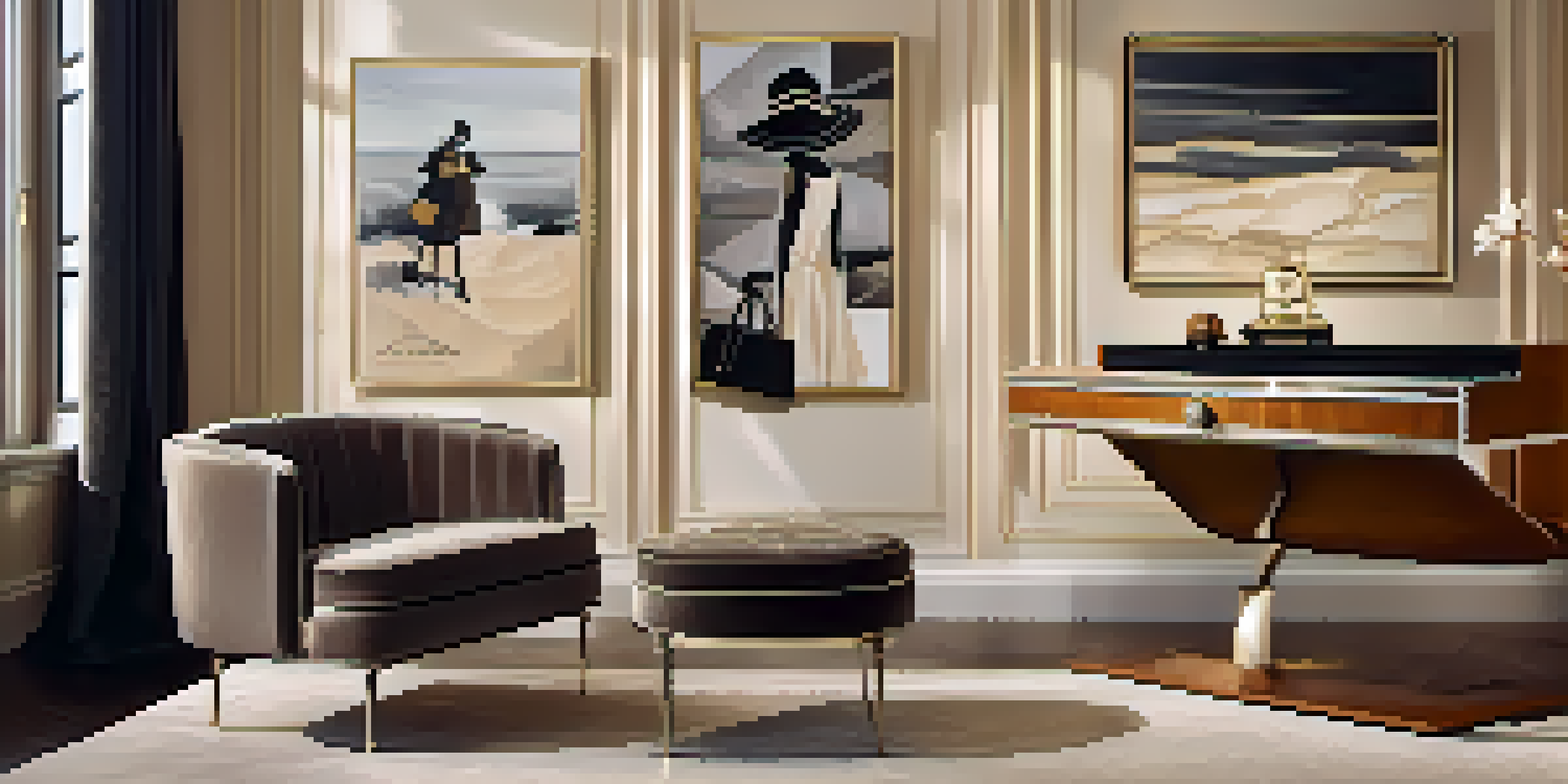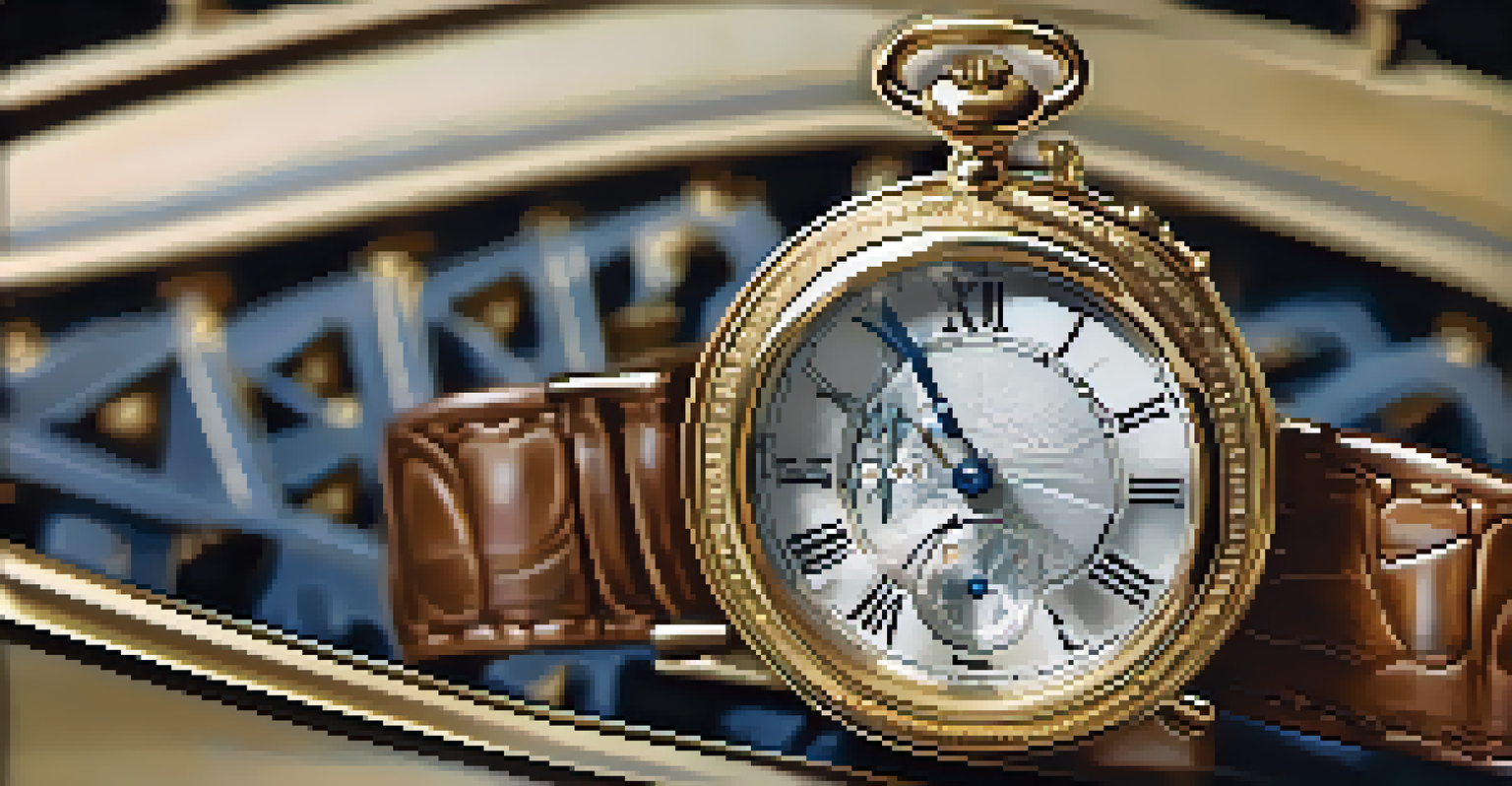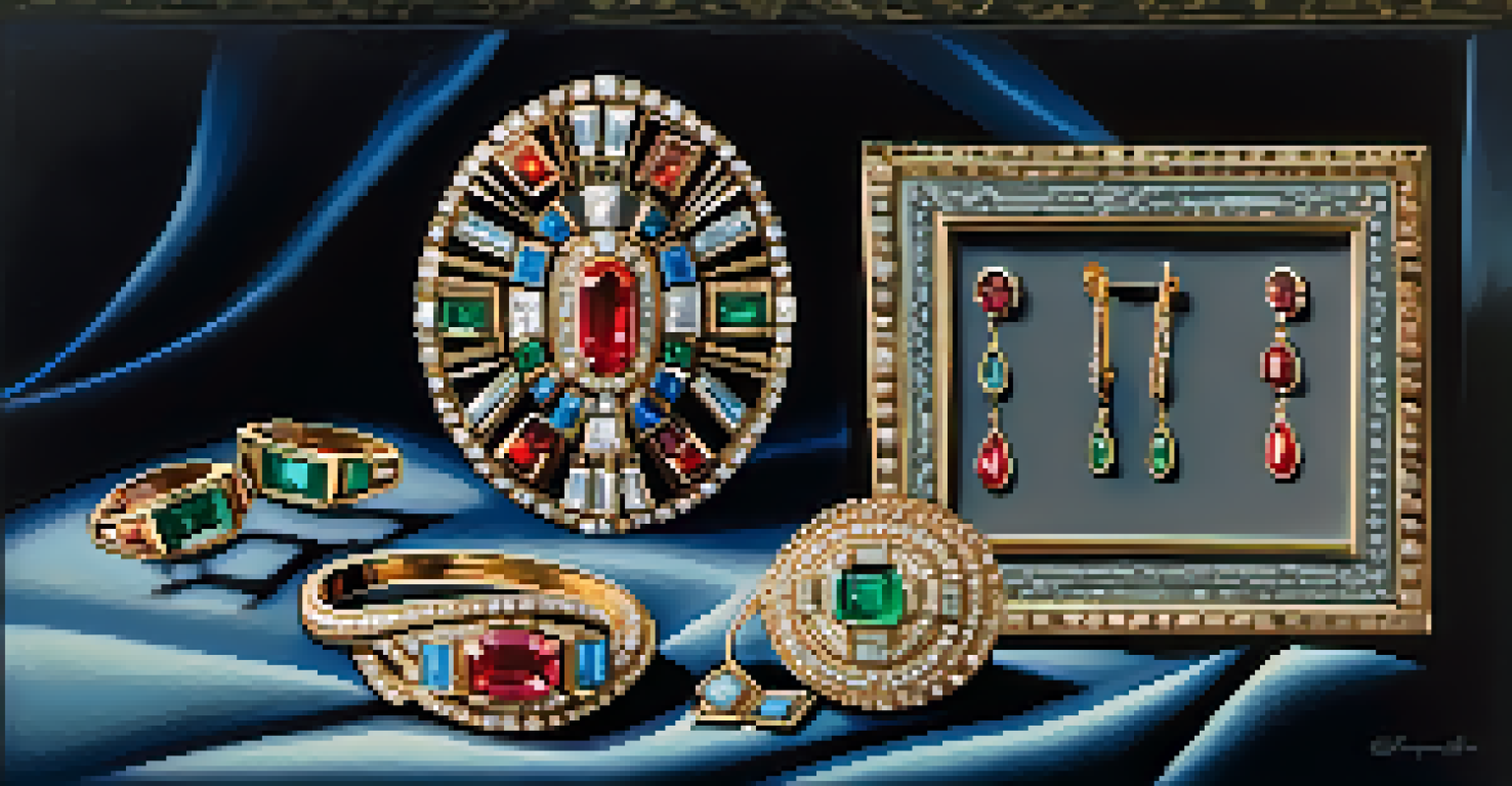The Evolution of Vintage Luxury: A Historical Perspective

Defining Vintage Luxury: What Sets It Apart?
Vintage luxury isn't just about age; it's a blend of history, craftsmanship, and exclusivity. Items classified as vintage often evoke nostalgia, representing the pinnacle of design from their respective eras. Think of a classic Chanel handbag or a mid-century Eames chair; these pieces tell stories through their unique aesthetics and quality.
Luxury is not about the money. It’s about the experience, the journey, and the story behind each piece.
What truly sets vintage luxury apart from contemporary luxury is the emotional connection it fosters. Each piece carries a history that can resonate with the owner, making it more than just an object but a cherished artifact. This emotional layer is what draws collectors and enthusiasts alike, enhancing the item's value beyond its material worth.
Moreover, vintage luxury items often reflect the societal trends and cultural shifts of their time. For instance, a vintage watch from the 1920s might encapsulate the spirit of the Roaring Twenties, while a piece from the 1960s may embody the liberation and creativity of that decade. This historical context adds depth to the allure of vintage luxury.
The Birth of Luxury: Early Examples in History
The roots of luxury can be traced back to ancient civilizations where opulent items were reserved for the elite. For example, the Egyptians adorned themselves with gold jewelry, while the Romans showcased their wealth through intricate mosaics and lavish feasts. These early examples set the stage for what luxury would come to represent: status and sophistication.

As time progressed, the Renaissance period marked a significant evolution in luxury, with an emphasis on art and culture. Wealthy patrons commissioned stunning works from renowned artists, leading to the creation of timeless masterpieces that are still celebrated today. This era underscored the notion that luxury was not just about material possessions but also about intellectual and artistic pursuits.
Emotional Value of Vintage Luxury
Vintage luxury items evoke nostalgia and carry unique histories, making them cherished artifacts rather than mere objects.
By the 18th and 19th centuries, luxury began to democratize slightly, with the rise of fashion houses. Tailors and designers started catering to the growing middle class, making fashionable items more accessible. However, true vintage luxury still maintained an air of exclusivity, often tied to craftsmanship and the use of premium materials.
The Roaring Twenties: A Golden Era for Luxury
The 1920s, often referred to as the Roaring Twenties, was a transformative decade for luxury. Following the devastation of World War I, society embraced a spirit of extravagance and hedonism. This newfound freedom was reflected in fashion, art, and design, leading to iconic styles that we now consider vintage luxury.
Vintage is not a style; it’s an attitude. It’s about appreciating the past while embracing the future.
Art Deco emerged as a defining design movement during this time, characterized by bold geometric shapes and lavish ornamentation. Luxury brands began to adopt these aesthetics, creating timeless pieces like stunning jewelry and elegant clothing, which are still revered today. The era became synonymous with glamour, and vintage luxury items from this period remain highly sought after.
Moreover, the Jazz Age brought a cultural shift, celebrating individuality and expression. This shift influenced luxury brands to innovate and experiment, resulting in unique designs that captured the essence of the time. The spirit of the Roaring Twenties continues to inspire modern luxury, making it a pivotal chapter in the evolution of vintage luxury.
Mid-Century Modern: A Shift in Design Philosophy
Following the opulence of the 1920s and 30s, the mid-20th century introduced a more minimalist approach to design. Mid-century modernism emphasized clean lines, functional forms, and a focus on simplicity. This shift reflected societal changes, as people began to prioritize practicality alongside aesthetics in their luxury items.
Designers like Charles and Ray Eames revolutionized furniture design during this era, creating pieces that were not only beautiful but also functional. Their work exemplified the notion that luxury could be accessible without compromising style. This marked a significant departure from the ornate designs of previous decades, showcasing a new interpretation of vintage luxury.
Sustainability in Vintage Fashion
Choosing vintage luxury offers a sustainable alternative to fast fashion, allowing consumers to appreciate craftsmanship while reducing their carbon footprint.
Additionally, this period saw the rise of luxury brands that embraced modernist principles, leading to innovative materials and production techniques. The combination of craftsmanship with an emphasis on usability laid the groundwork for what we now consider timeless pieces in vintage luxury collections.
The Influence of Pop Culture on Vintage Luxury
Pop culture has played a pivotal role in shaping the landscape of vintage luxury. Iconic figures such as Audrey Hepburn and James Dean not only defined style trends but also popularized luxury brands through their on-screen personas. When a celebrity is seen donning a vintage piece, it often transforms that item into a sought-after treasure.
The rise of Hollywood and the entertainment industry in the mid-20th century created a direct link between luxury fashion and fame. Brands like Dior and Gucci began to leverage this connection, leading to a surge in demand for vintage luxury pieces associated with celebrity endorsements. This intersection of fame and fashion continues to influence trends today.
Moreover, music and art movements have also left their mark on vintage luxury. For instance, the punk rock movement of the 1970s challenged traditional luxury norms, leading to the emergence of brands that embraced a more rebellious aesthetic. This ongoing dialogue between culture and luxury keeps vintage items relevant and desirable across generations.
The Sustainability Factor: Vintage Luxury in Modern Times
In recent years, sustainability has become a significant consideration in the luxury market. As consumers become more aware of the environmental impact of fast fashion, vintage luxury offers a sustainable alternative. By opting for vintage pieces, individuals can reduce their carbon footprint while still enjoying high-quality, timeless items.
The concept of circular fashion has gained traction, promoting the idea of reusing and recycling luxury goods. Vintage luxury fits perfectly into this model, as it allows for the appreciation of craftsmanship without contributing to the waste associated with mass production. This shift in mindset is not just a trend but a movement toward more conscious consumerism.
Cultural Influence on Luxury Trends
Pop culture and historical movements have significantly shaped vintage luxury, transforming iconic pieces into sought-after treasures through celebrity endorsements and cultural shifts.
Additionally, many luxury brands are now recognizing the value of their heritage and the stories behind vintage pieces. By promoting their vintage collections, they not only honor their history but also cater to a growing market of eco-conscious consumers. This evolving landscape emphasizes that vintage luxury is not just about the past; it's a relevant and forward-thinking choice.
Collecting Vintage Luxury: Tips for Enthusiasts
For those looking to venture into the world of vintage luxury collecting, understanding the market is essential. Start by researching reputable dealers and auction houses, as well as familiarizing yourself with key brands and designers. Knowledge is power, and being informed will help you make sound investments.
Additionally, condition plays a crucial role in determining the value of vintage items. Always inspect pieces thoroughly for signs of wear and authenticity. The thrill of hunting for hidden gems is part of the joy of collecting, but ensuring that your finds are in good condition will enhance their value in the long run.

Lastly, embrace the stories behind each piece you collect. Whether it's a vintage watch that once belonged to a famous figure or a handbag with a rich history, these narratives add immense value and personal connection to your collection. Remember, vintage luxury is not just about ownership; it's about cherishing the stories that come with each exquisite item.